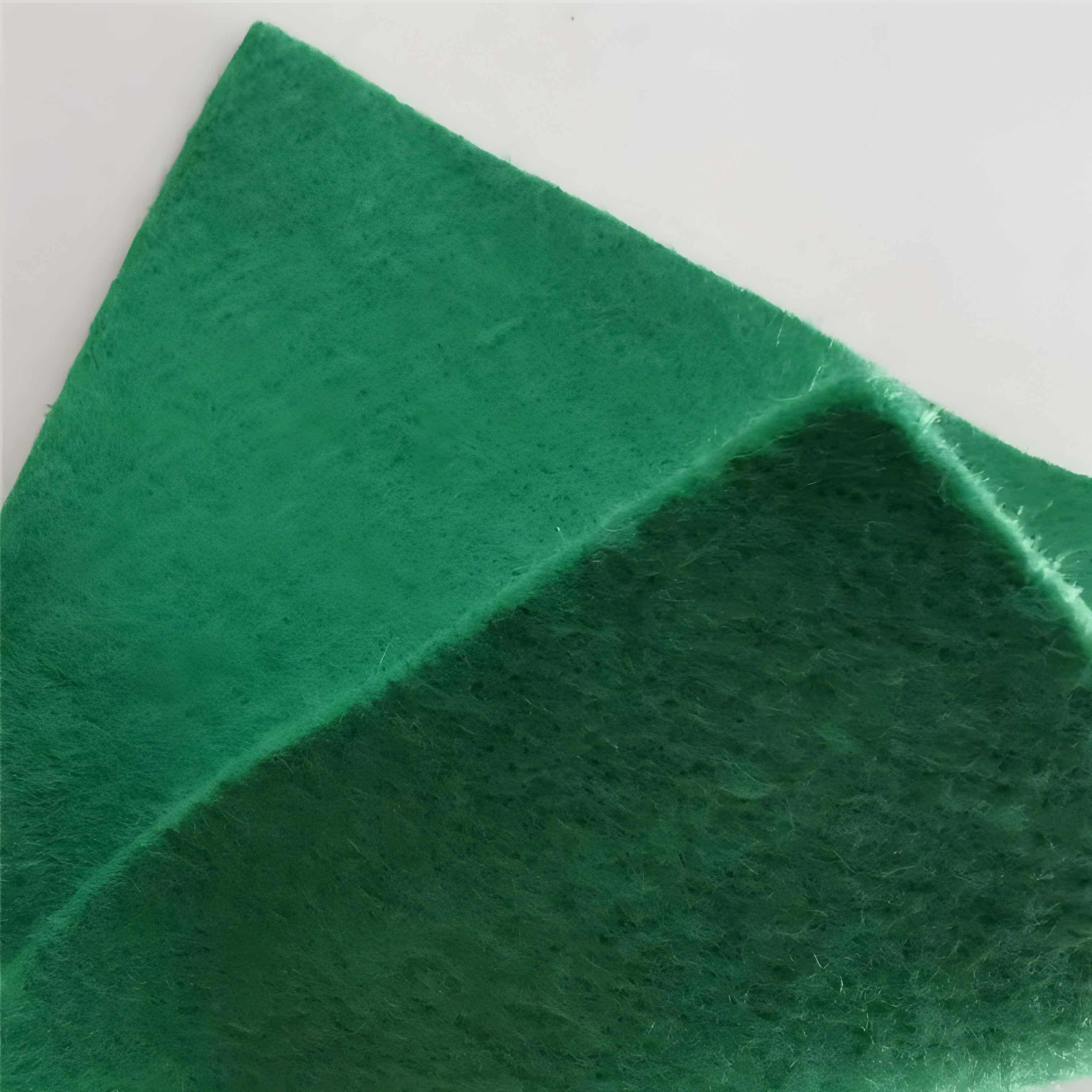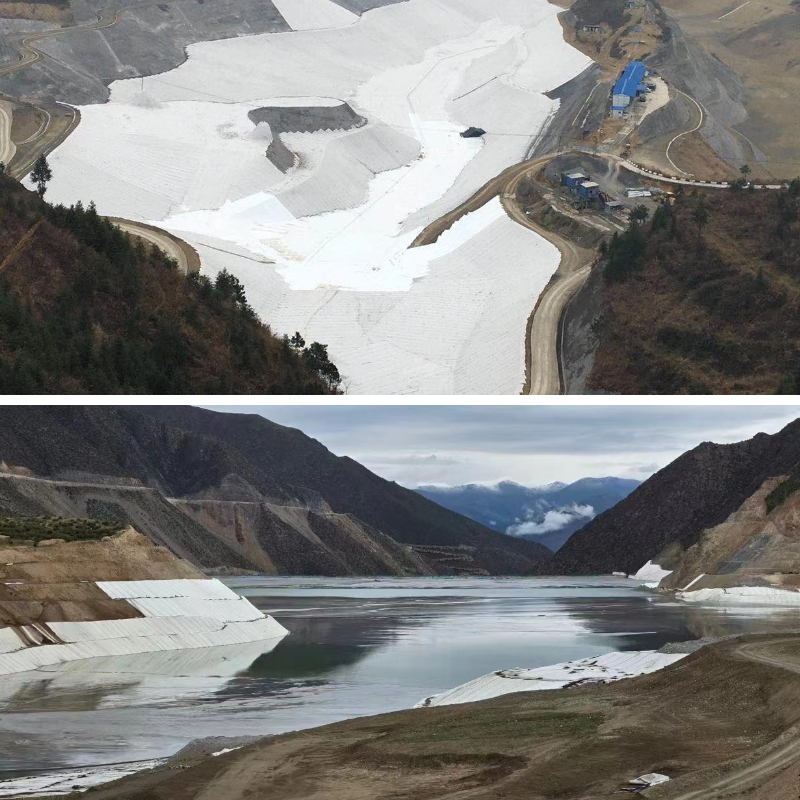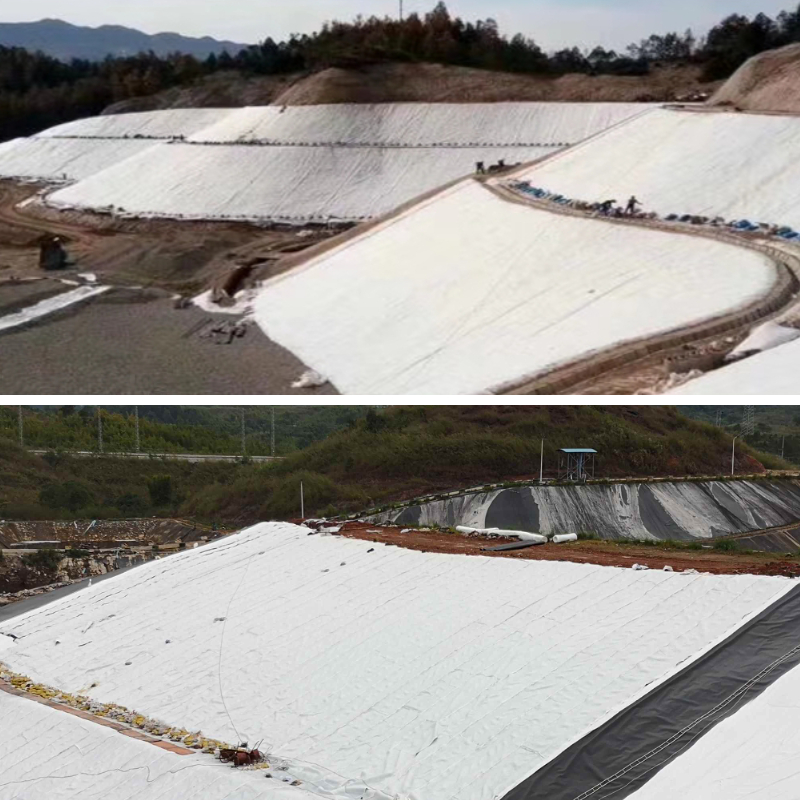Thermally Bonded Non Woven Geotextile
Balanced and Stable Strength: Thermal bonding secures the fibers without chemical adhesives, ensuring balanced horizontal and vertical tensile and tear resistance, ensuring stable load bearing and preventing breakage.
Excellent Water Permeability and Soil Retention: The porous structure rapidly drains water, reducing water pressure while trapping soil particles, preventing loss and maintaining slope/roadbed stability.
Easy Installation: The soft, lightweight material is easily cut to accommodate complex terrain, and the roll-to-roll design facilitates installation and shortens construction time.
Weather-Resistant and Durable: Thermal bonding enhances fiber strength, while the polypropylene material is UV-resistant, acid- and alkali-resistant, and microbial-resistant, ensuring long-term, low-maintenance use.
Product Introduction
I. Basic Properties
Thermally Bonded Non Woven Geotextile are nonwoven geosynthetics made from short/filament polypropylene (PP) or polyester (PET) fibers. Heat and melting create thermal bonds between the fibers (no chemical adhesives are required), resulting in a porous sheet material. Its basic physical properties include a wide weight range (typically 100-800g/㎡), moderate thickness, uniform fiber distribution, and a balance of flexibility and structural stability.
II. Core Functions
Filtration and Drainage: The porous fiber structure traps soil particles, preventing soil erosion while allowing water and air to penetrate freely, rapidly draining excess water from areas like roadbeds and slopes, reducing pore water pressure and preventing structural settlement.
Isolation and Protection: It acts as a separator between different media (such as roadbed and backfill, gravel and soil), preventing soil mixing and maintaining the stability of each structural layer. It also protects underlying impermeable membranes, pipelines, and other infrastructure, minimizing physical damage from construction machinery or sharp particles.
Reinforcement and Stabilization: With balanced tensile strength, it distributes soil loads, enhances the overall shear resistance of the soil, improves the anti-sliding stability of slopes and embankments, and assists in improving the bearing capacity of weak foundations.
III. Main Features
Balanced and Reliable Performance: The thermal bonding process ensures a tight bond between the fibers, minimizing differences in tensile and tear strength in the transverse and longitudinal directions. This eliminates localized weak points and resists breakage under complex loads. Its performance stability surpasses that of some chemically bonded geotextiles.
Strong Construction Adaptability: The flexible and lightweight material can be flexibly cut into any shape, adapting to complex terrains such as curved slopes and irregular sites. Roll packaging facilitates transportation and installation, and splicing is simple, significantly improving construction efficiency.
Excellent Environmental Tolerance: The raw materials are inherently resistant to acids, alkalis, and microbial attack, and the thermally bonded structure leaves no chemical residue. Combined with the UV stabilizers added to some products, it can withstand long-term use in harsh environments, such as open air and underground, with a service life of over 5-10 years.
Outstanding economical efficiency: The production process is mature, and the cost is lower than that of woven geotextiles. It also features convenient installation and minimal maintenance, reducing overall project consumables and labor input, while balancing performance with cost-effectiveness.
Product Parameters
project | metric | ||||||||||
Nominal strength/(kN/m) | |||||||||||
6 | 9 | 12 | 18 | 24 | 30 | 36 | 48 | 54 | |||
1 | Longitudinal and transverse tensile strength / (kN/m) ≥ | 6 | 9 | 12 | 18 | 24 | 30 | 36 | 48 | 54 | |
2 | Maximum elongation at maximum load in longitudinal and transverse directions/% | 30~80 | |||||||||
3 | CBR top penetration strength /kN ≥ | 0.9 | 1.6 | 1.9 | 2.9 | 3.9 | 5.3 | 6.4 | 7.9 | 8.5 | |
4 | Longitudinal and transverse tearing strength /kN | 0.15 | 0.22 | 0.29 | 0.43 | 0.57 | 0.71 | 0.83 | 1.1 | 1.25 | |
5 | Equivalent aperture O.90(O95)/mm | 0.05~0.30 | |||||||||
6 | Vertical permeability coefficient/(cm/s) | K× (10-¹~10-), where K=1.0~9.9 | |||||||||
7 | Width deviation rate /% ≥ | -0.5 | |||||||||
8 | Unit area mass deviation rate /% ≥ | -5 | |||||||||
9 | Thickness deviation rate /% ≥ | -10 | |||||||||
10 | Thickness coefficient of variation (CV)/% ≤ | 10 | |||||||||
11 | Dynamic perforation | Puncture hole diameter/mm ≤ | 37 | 33 | 27 | 20 | 17 | 14 | 11 | 9 | 7 |
12 | Longitudinal and transverse fracture strength (grab method)/kN ≥ | 0.3 | 0.5 | 0.7 | 1.1 | 1.4 | 1.9 | 2.4 | 3 | 3.5 | |
13 | Ultraviolet resistance (Xenon arc lamp method) | Longitudinal and transverse strength retention rate% ≥ | 70 | ||||||||
14 | Ultraviolet resistance (fluorescence UV lamp method) | Longitudinal and transverse strength retention rate% ≥ | 80 | ||||||||
Product Application
1. Road and Municipal Infrastructure Projects
Subgrade Filtration and Drainage: Laid between the subgrade filler (e.g., gravel, sand, and gravel) and the undisturbed soil, this porous structure traps soil particles, preventing the loss of the subgrade filler. It also rapidly drains water from the subgrade, reducing pore water pressure and preventing subgrade settlement and mudslides.
Pavement Base Separation: Laid between the subbase and subbase of asphalt or cement pavement, it separates aggregates of different particle sizes, preventing base aggregate from embedding into the subbase, maintaining the integrity of the pavement structure and extending the service life of the pavement.
2. Water Conservancy and Slope Protection Projects
Slope Seepage Control Auxiliary: Laid above and below anti-seepage membranes (e.g., HDPE membranes) on the slopes of rivers and reservoirs, it serves as a protective layer to prevent the membrane from being scratched by sharp stones and soil. It also acts as a filter, preventing soil particles from clogging the membrane pores and ensuring effective anti-seepage.
Dam Reinforcement and Stabilization: Used for the slopes or foundations of small and medium-sized dams. Its balanced tensile strength distributes the load, enhances the dam's anti-slip properties, and reduces deformation caused by water erosion and soil weight.
3. Environmental Protection and Landfill Engineering
Landfill Filter Layer: Installed within the landfill leachate collection system, between the waste layer and the leachate drainage pipe, it filters suspended impurities in the leachate, prevents pipe clogging, and ensures efficient leachate collection and treatment.
Contaminated Site Remediation and Isolation: In industrial contaminated soil remediation projects, it acts as a barrier layer to separate contaminated soil from clean soil, preventing the migration of contaminants through soil particles while allowing water to penetrate, aiding in leaching or bioremediation of the contaminated soil.
4. Building and Site Engineering
Building Foundation Drainage: Installed below the crushed stone cushion after the building foundation pit is excavated, it drains groundwater from the pit, lowers the groundwater level, and prevents a decrease in bearing capacity due to excessive moisture content.
Temporary construction site protection: Paved on the surface of temporary soil dumps and construction access roads, it isolates the soil pile or construction vehicle load from the existing ground, preventing soil compaction and mixing. This allows for rapid cleanup during subsequent site restoration, minimizing damage to the original terrain.
The application of thermally bonded nonwoven geotextiles revolves around their core functions of "filtration + isolation + stabilization," deeply adapting to the needs of projects across a wide range of sectors, including infrastructure, water conservancy, environmental protection, and construction. In practical applications, they not only channel moisture and intercept soil particles through their porous structure, addressing problems such as roadbed settlement, waterlogging, and leachate blockage, but also provide isolation, protection, reinforcement, and stability through their material properties, ensuring structural safety and environmental remediation. Their flexible adaptability and reliable performance make them a key auxiliary material that balances practicality and cost-effectiveness in various projects, effectively improving project quality and service life.













